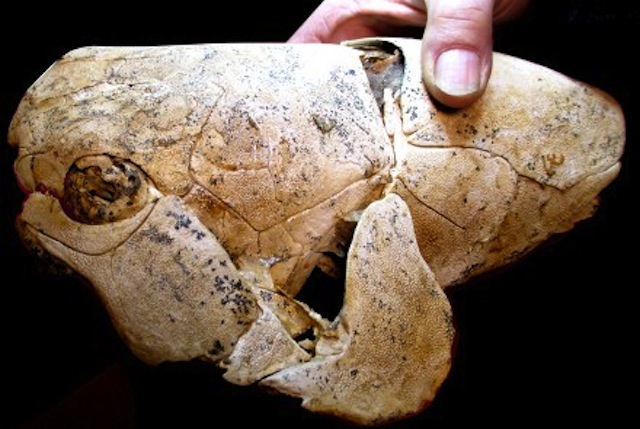SUMMARY
This is AI generated summarization, which may have errors. For context, always refer to the full article.

SYDNEY, Australia – Paleontologists have made the surprising evolutionary discovery that ancient Australian fish may have had abdominal muscles, previously thought to have only developed in land animals.
Researchers mapping the oldest fossilized vertebrate muscles ever seen — in Gogo fish thought to be 380 million years old — worked out the position of the muscles and the orientation of the muscle fibers.
The fossil fish, found in the Kimberley region of Western Australia, are enclosed in limestone nodules and are known for their exceptional preservation.
“The muscles in the abdomen cavity that we found weren’t expected because even in living fish their main mode of propulsion is of course to flap their tails to left and right so all the muscles are sitting on the side of the body,” said Gavin Young from Australian National University’s Research School of Earth Sciences.
“What’s interesting is when we found these muscles and did some comparisons, the only comparable muscles are in… land animals,” he added to AFP.
He said the question now was whether these muscles had the same function as abdominals seen in land animals.
In the study published in Science, the researchers prepared and analyzed the muscles in a small number of specimens from three different species.
“(The ancient fish) have already revealed soft tissues such as nerve and muscle cells, the oldest known vertebrate embryos, and even a preserved umbilical cord,” Young said.
The latest study went further and mapped the musculature of the ancient fish for the first time, possible after researchers realized that soft tissues had been preserved in some of the specimens, though it was being destroyed in the earlier process of acid etching the skeletons.
Curtin University associate professor Kate Trinajstic, a chief investigator on the ANU-based research into early vertebrate evolution, said the team had been “stunned to find that our ancient fossil fishes had abs!”
“Abdominal muscles were thought to be an invention of animals that first walked onto the land but this discovery shows that these muscles appeared much earlier in our evolutionary history,” she said.
Abdominal muscles in humans serve a number of functions, including protecting the internal organs, providing postural support, and for movement.
The first Australian expedition to collect Gogo fossil fish in the Kimberley was conducted in 1970. – Rappler.com
Add a comment
How does this make you feel?
There are no comments yet. Add your comment to start the conversation.